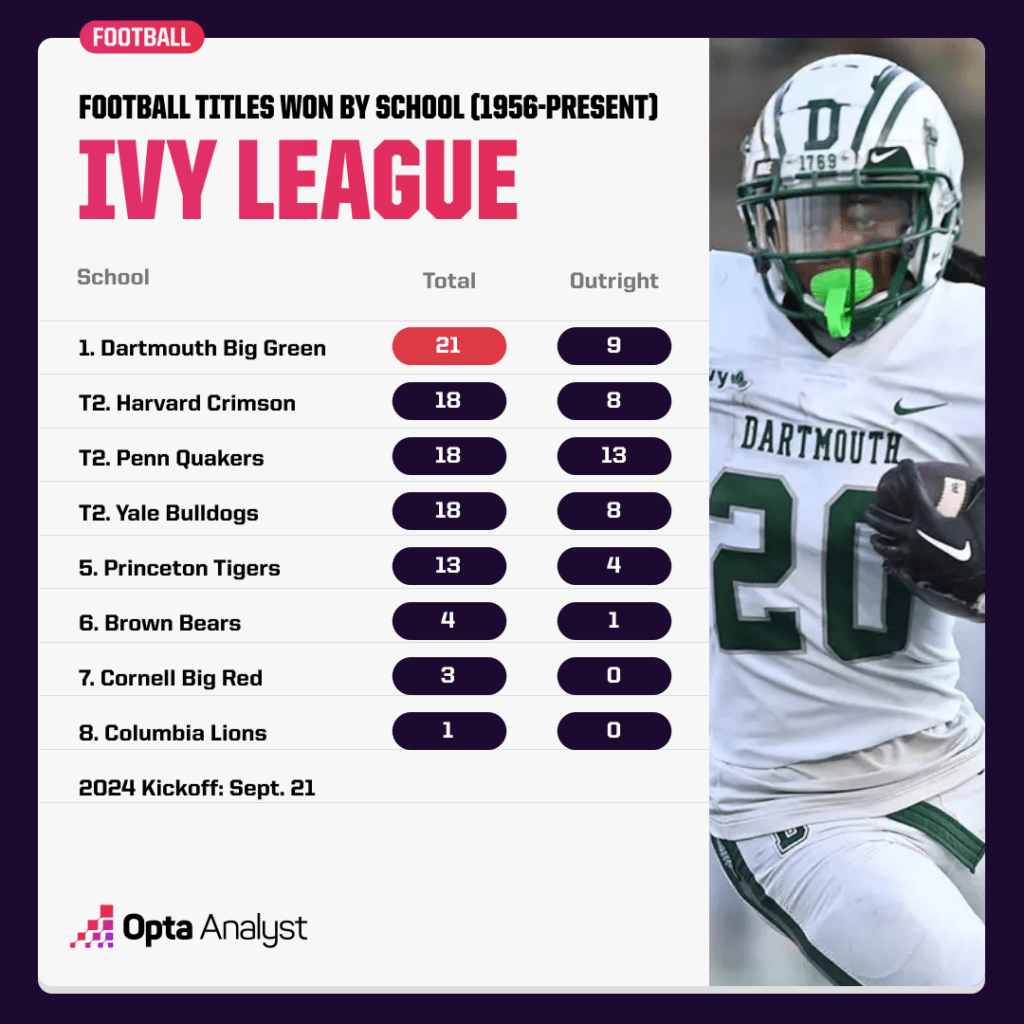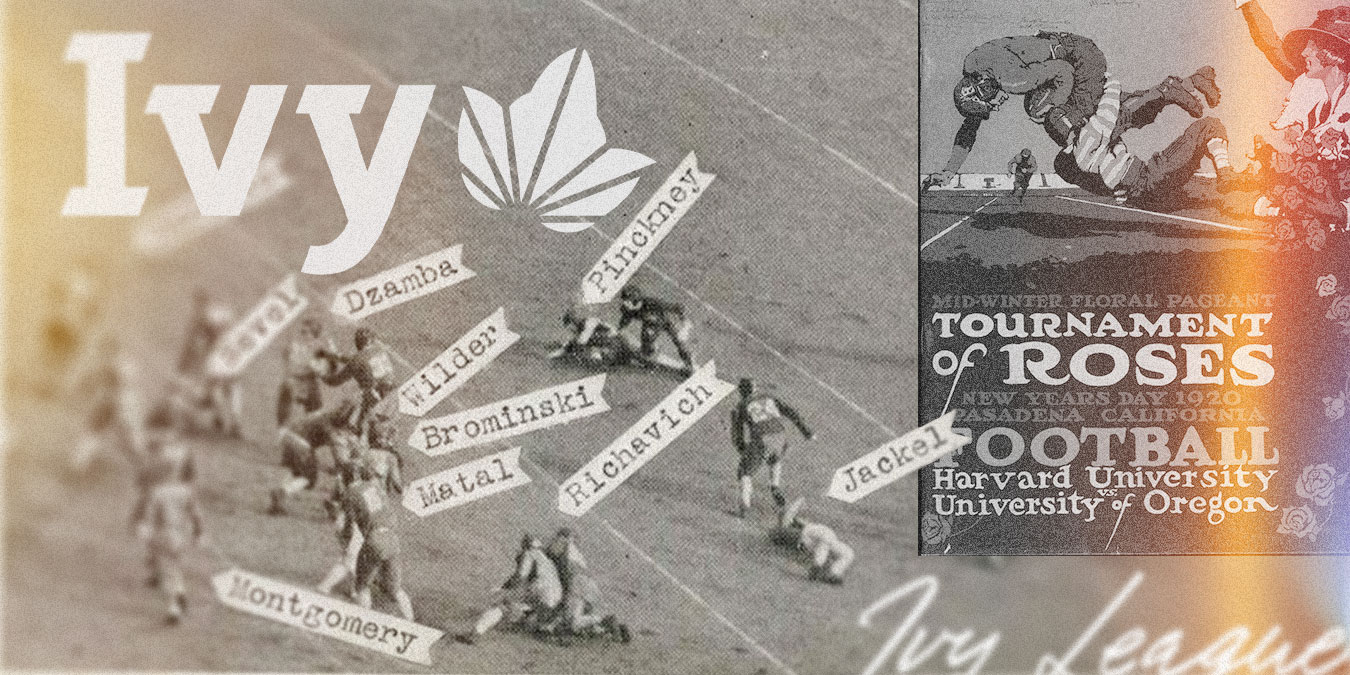Ivy League football in bowl games. It sounds odd, right? Well, the historic conference and other future FCS programs used to go bowling. We rank the best performances – whether wins or losses – prior to the 2024 Ivy League season kicking off.
While most of college football is well into the 2024 season, it’s a special week within the FCS ranks because the Ivy League begins play.
The historic conference starts later than most leagues, plays in 10 straight regular-season weeks (as opposed to other programs playing 11 or 12 games over 13 weeks) and doesn’t participate in a postseason, such as the FCS playoffs.
Yes, Ivy League football marches to the beat of its own drum and likes it that way.
There was a time when Ivy teams played in – and won – big-time bowl games. Even though they didn’t offer athletic scholarships, they knocked off programs that today are a part of the FBS Power Four conference setup.
Then, after World War II, when college football began becoming more of a big-money sport, the Ivy League and many other schools made the decision to keep the focus on academics first, athletics second. They didn’t want to be known as football factories.
But back in the day? They could knock around teams that would stun you today if you saw the scores.
So we decided to rank some of the more exciting “Back in the ‘Ol Days” bowl game showings by current FCS schools. Not surprisingly, some of the bigger bowl wins were by the same Ivy League schools that are kicking off their season this weekend.
Note the bowl game rankings predate the actual Ivy League, which formed in 1954, then saw Brown, Columbia, Cornell, Dartmouth, Harvard, Penn, Princeton and Yale play together in their first football season in 1956.
Top-Five Bowl Games of Future FCS Programs
1. 1934 Rose Bowl (Columbia 7, Stanford 0)
This is considered one of the greatest upsets in college football history. The tradition back in those days is the West Coast’s unofficial champion would extend an invite to the East Coast power it wanted to face. Stanford did this with Princeton first, then Michigan – and both declined.
As the story goes, the powerful New York City media had been pumping up Columbia – located in, you guessed it, NYC. A key win over a strong Navy team along with victories over Virginia and Penn State turned heads, and Columbia’s lone loss was to undefeated Princeton. The Lions accepted the Cardinal’s invitation, hopped on a train to California, and promptly whipped them.
The elements favored Columbia, as southern, sunny California wasn’t accustomed to the damp, soaked field at the Rose Bowl. The Lions scored the game’s lone touchdown when Al Barabas went around end on a trick play.
2. 1920 Rose Bowl (Harvard 7, Oregon 6)
In the first Rose Bowl played after the conclusion of World War I, the two teams put on quite a show for the estimated 35,000 fans who showed up at Tournament Park in Pasadena, California (the actual Rose Bowl of today would be built in 1923).
Harvard’s Fred Church made the play of the game when he rushed in for a 13-yard touchdown in the first half, and that would stand as the only touchdown of the game as Oregon mustered only two field goals. Arnold Horweens’ point after kick would hold up as the game-winning point.
Many years later, Harvard’s Eddie Casey was named the retroactive player of the 1920 game, and he went on to become the Crimson head coach for four seasons. He also played and coached professional football and was later inducted into the College Football Hall of Fame.

3. 1916 Rose Bowl (Washington State 14, Brown 0)
The result may not have turned out exactly how Brown wanted it, but this game was notable for several more reasons than just the final score. Brown’s Fritz Pollard became the first black player in Rose Bowl history, rushing for 47 yards on 13 carries behind a Bears line that featured future Duke legendary coach Wallace Wade.
This also was only the second Rose Bowl as we know it today (the first was way back in 1902), but was then known as the Tournament East-West Football Game and played at the Rose Bowl’s predecessor in Pasadena – Tournament Park.
Brown coach Eddie N. Robinson saw his team shut out Wazzu through the first half, but the Cougars scored twice after halftime. Pollard went on to be the first black player named to the Walter Camp All-America team and become the first black NFL head coach.
4. 1942 Sugar Bowl (Fordham 2, Missouri 0)
On a nasty New Years Day, a surprising crowd of 66,154 fans braved the elements at Tulane Stadium in New Orleans to watch a grudge match. Played just a few weeks after the Pearl Harbor attacks, the game went on as planned and featured coach Jim Crowley’s No. 6 Fordham Rams vs. No. 7 Missouri.
The lone points came in the fourth quarter on a safety when the Rams’ Alex Santilli blocked a Missouri punt and Stanley Ritinski nearly corralled it for a touchdown, but the referee ruled that Ritinski touching the ball actually caused it to roll through the back of the end zone, making it a safety instead.
Both teams’ defense and the weather kept any more points off the board as neither team moved the ball well.
5. 1937 Orange Bowl (Duquesne 13, Mississippi State 12)
Duquesne All-American Boyd Brumbaugh, who would go on to star in the NFL for the Brooklyn Dodgers and the Pittsburgh Steelers from 1938 to ’41, was the standout of the game for the Dukes.
Coached by John “Clipper” Smith, the Dukes came into the game ranked No. 14 in the final Associated Press rankings. Brumbaugh ran for a touchdown and threw a critical 72-yard touchdown to Ernest Hefferle in the fourth quarter to give Duquesne its comeback win in Miami.
The Dukes never played in a bowl game again.
Other Notable Bowls Featuring Current FCS Programs
1917 Rose Bowl: Oregon 14, Penn 0
1935 Orange Bowl: Bucknell 26, Miami (Fla.) 0
1941 Orange Bowl: Mississippi State 14, Georgetown 7
1941 Cotton Bowl: Texas A&M 13, Fordham 12
1946 Orange Bowl: Miami (Fla.) 13, Holy Cross 6
1950 Sun Bowl: Texas Western (now UTEP) 33, Georgetown 20
1958 Sun Bowl: Louisville 34, Drake 20
1961 Sun Bowl: Villanova 17, Wichita 9
1962 Liberty Bowl: Oregon State 6, Villanova 0
Note: The Tangerine Bowl (1947-82) featured several current FCS programs over the years, but generally featured games pitting two small schools during that time. It would be renamed the Florida Citrus Bowl in 1983 and featured primarily SEC and ACC teams from then on.
Follow all of our FCS football coverage, including on X, Facebook and Instagram.
